If you’ve ever done research on a hike, you may have noticed that hikes are rated in a hiking class system. This system is a 1-5 numbered system. In this article, we aim to break down hiking classes in a easy to understand article. We will also briefly explain the climbing rating systems and how this differs from hiking classes.
Yosemite Decimal System
The 1-5 hiking classes are part of the Yosemite Decimal System and was created in the 1950s by members of the Sierra Club who wanted a way to communicate and assess the difficulty of routes in their mountaineering efforts. The Yosemite Decimal System is used mainly for rock climbing, but it is also widely used in hiking. Class 5 is divided into sections from 5.0 to 5.15. Ratings that are above 5.10 are subdivided further, similar to how 5.10b or rating would be written as followed by a letter c.
For the purpose of this article, we are going to talk about the hiking portions of the Yosemite Decimal System: class 1 – class 5.0
Need To Know Information
It is important to know that trails are rated by their most difficult sections. For example, a hike may be rated as class 3 even if 98% of the hike is class 1 or 2, but because it has a class 3 section in order to finish the hike, it is rated class 3. It is also important to note that hiking classes are subjective. While there are guidelines to this, the area between hiking classes is certainly subjective and may vary slightly from person to person, or resource to resource. Therefore, it is always important to be prepared, and also to be ready to turn around whenever needed.
Class 1 Hike: Easy Hiking
The easiest class of hikes is Class 1. This type of hike requires no technical skills and is usually walking on well traveled and well maintained trails. The terrain is easy to navigate, and the only potential hazards are loose rocks and sticks that may be found on the path. Class 1 hikes can range from short walks in a park to longer day hikes.
As an example, Colorado’s highest peak, Mount Elbert, while being above 14,000 feet, has a class 1 hiking route. Many of the most traveled hikes are in this category.
Gear Needed: There is no specialty gear needed to hike in this class.
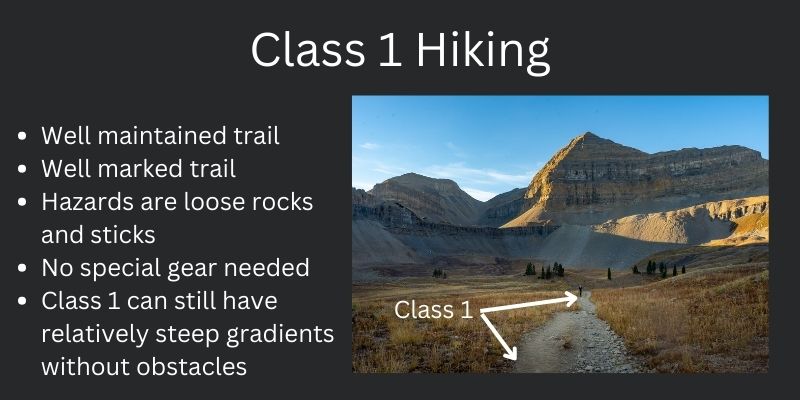
Class 2 Hike: Easy To Intermediate Hiking
Class 2 is still considered easy to moderate. Class two trails may require some navigation as trails that don’t have very good markings or signage can be labeled as class two for this reason. This type of hike may require some to support themselves with their hands on the trail, but never anything that poses much danger. The terrain can be varied and you will find rocks to climb over as well as steep sections of the trail that may require a bit more effort to navigate.
As an example, Mount Whitney’s (The highest peak in the contiguous U.S.) Main Trail is a class two hike and the most popular route to the summit.
Gear Needed: Trekking poles are recommended, but not necessary. In addition, it becomes more important to have adequate footwear (hiking shoes, trail runners, or hiking boots) as opposed to just sneakers.

Class 3 Hike: Hiking And Scrambling
Class three hikes require more technical skills than classes 1 or 2. This type of trail includes sections of scrambling, or the use of hands to help you up and down sections of the trail. This class also includes some exposure (large drop offs or cliffs), which means that there are sections where a fall could cause severe injury or death. Class three hikes are often considered strenuous day hikes and should only be attempted by those with some experience in scrambling.
An example of class 3 hiking would be Long’s Peak in Rocky Mountain National Park.
Gear Needed: With class 3, helmets are highly recommended for rockfall danger, and other fall dangers. Ropes and climbing gear are not required with class 3, however, some people will bring them for ease of mind and added safety.
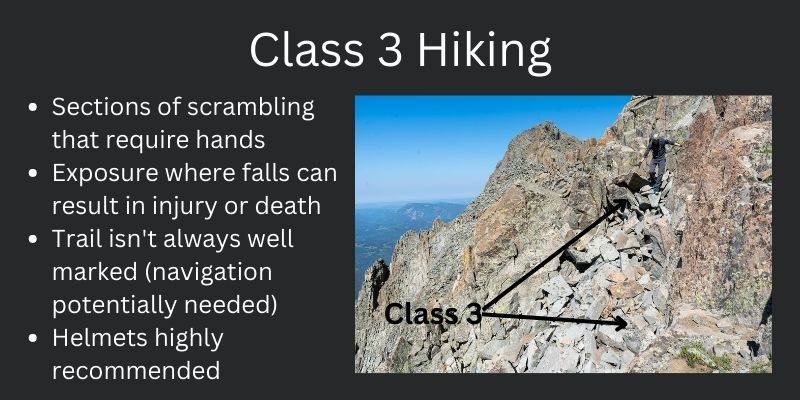
Class 4 Hike: When Hiking Turns Into Climbing
Class four hikes are considered climbs during the class 4 sections. These trails contain sections of scrambling, exposure. This is when hiking turns into technical climbing and requires a higher level of skill than the previous classes. Hand holds and foot holds are essential. At class four, falls can result in death or serious injury. There is usually exposure on class 4 hikes, and some hikers may bring climbing gear for safety.
Mount Wilson, a Colorado 14er, is an example of a class 4 hike.
Gear Needed: With class 4, helmets are highly recommended. Ropes and climbing gear are brought by some.
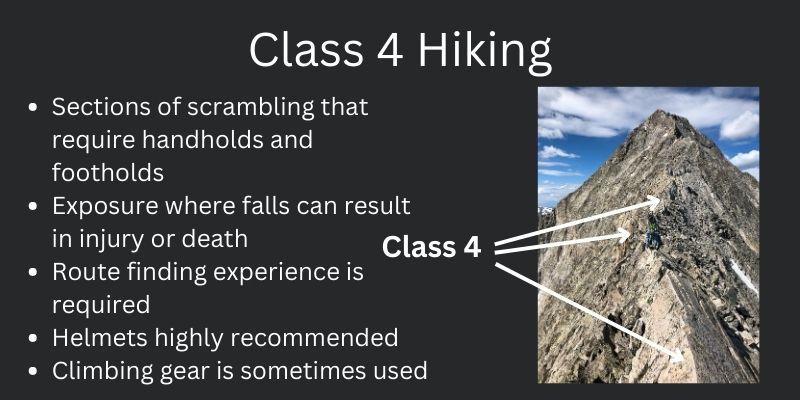
Class 5: Climbing
Class 5 is the beginning of climbing ratings. Handholds and footholds are required. The terrain becomes verticle near vertical, or even beyond vertical. For class 5 trails to not require ropes and climbing gear, they will be labeled as just class 5, and not have a climbing decimal rating.
The Maroon Bells Traverse is an example of very popular class 5 hikes that require climbing in portions where most do not bring ropes.
Gear Needed: Helmets are highly recommended, and ropes and climbing gear are used by some. When a trail goes beyond the base class 5, ropes and climbing gear are needed.
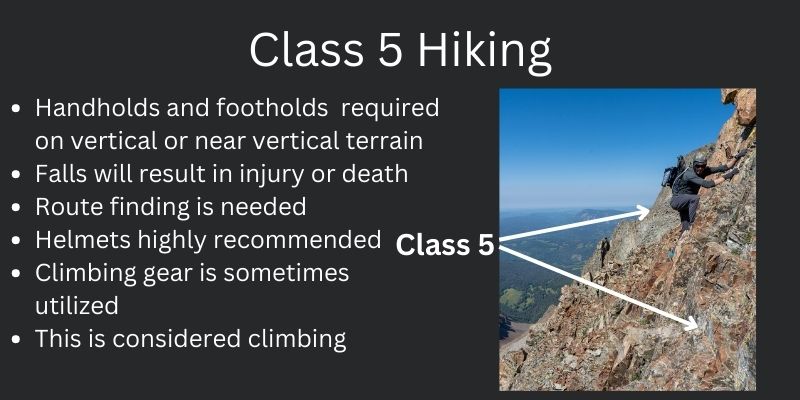
Photos Of Different Hiking Classes
The photos below show examples of each class of hiking. It is worth noting that in these photos are sections of hikes. We are aiming to highlight the specific sections where hikers are as the specific classes. Many of these hikes shown have harder or easier terrain than what is shown here, but we are looking to help you visualize what specific terrain falls into each of these categories.

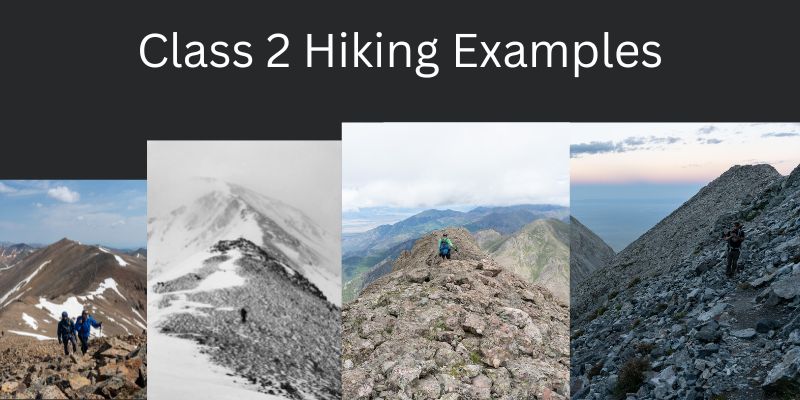
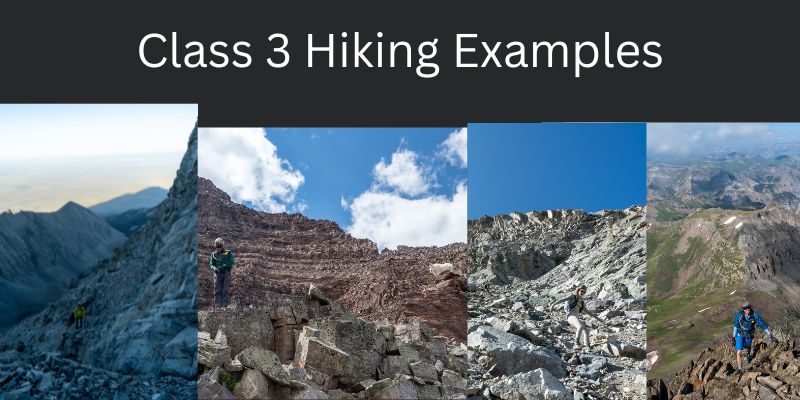
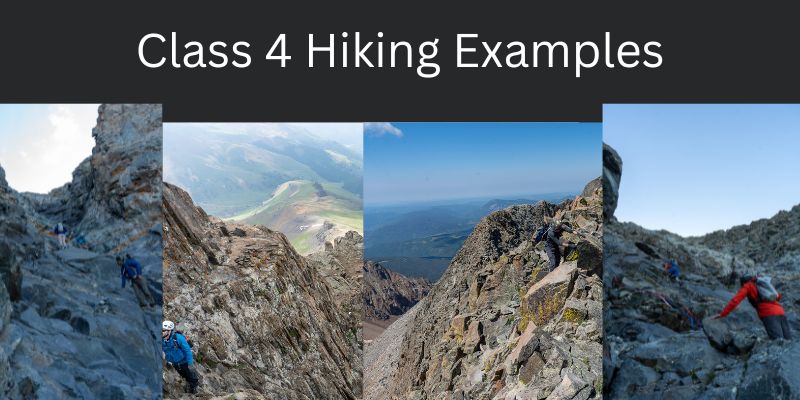
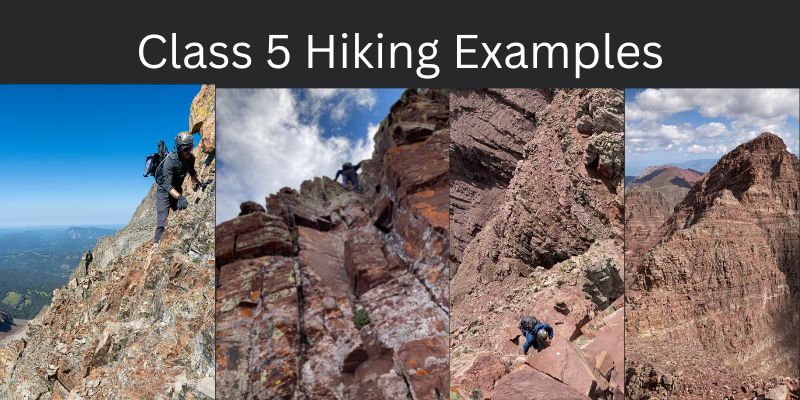
Max DesMarais is the founder of hikingandfishing.com. He has a passion for the outdoors and making outdoor education and adventure more accessible. Max is a published author for various outdoor adventure, travel, and marketing websites. He is an experienced hiker, backpacker, fly fisherman, backcountry skier, trail runner, and spends his free time in the outdoors. These adventures allow him to test gear, learn new skills, and experience new places so that he can educate others. Max grew up hiking all around New Hampshire and New England. He became obsessed with the New Hampshire mountains, and the NH 48, where he guided hikes and trail runs in the White Mountains. Since moving out west, Max has continued climbed all of the Colorado 14ers, is always testing gear, learning skills, gaining experience, and building his endurance for outdoor sports. You can read more about his experience here: hikingandfishing/about
